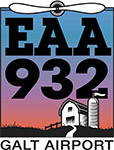It might surprise you to know that cockpit traffic displays do not necessarily show all other airplanes in the area and there are a number of reasons for these omissions. What pilots see depends on how their aircraft are equipped, the avionics in the target aircraft and the available services in between.
Cockpit traffic information begins with a signal from a “target” aircraft with an active Mode S or ADS-B Out transponder. This means that aircraft not equipped with either of these technologies will never be picked up as a traffic target. Many older aircraft do not have any type of transponder installed.
Cockpit traffic displays rely on radio signals from ground-based surveillance radar stations (TIS), ADS-B ground stations, and ADS-B air-to-air broadcasts. Aircraft equipped with a Mode S transponder can receive only radar traffic information and ADS-B In equipped aircraft will receive all of the traffic information. (ADS-B ground stations receive a data feed from the radar stations).
Aircraft with at least a Mode S transponder can be tracked by ground-based surveillance radar stations, but this service has numerous limitations. For example, aircraft must be within range and in direct line of sight of a station, which means that targets may be obscured by terrain or other obstacles, such as wind turbine farms. There is also a signal latency of 5 to 12 seconds due to the time it takes the radar to complete a sweep to collect traffic data, and a second sweep to broadcast the data. Aircraft directly over the radar site and traffic directly below your aircraft might also be missed by the radar.
ADS-B equipped aircraft provide more detailed, precise, and timely traffic information, with a once-per-second update rate. Aircraft must be equipped to receive an ADS-B In signal to take advantage of this traffic information.
There are also some limitations with graphical cockpit displays such as the popular Garmin GNS 400/500 series GPS, which displays a maximum of 8 traffic targets and only those within 7 nautical miles horizontal distance, and from 3,500 feet above to 3,000 below vertical distance. Other GPS devices and multi function displays (MFDs) may have their own individual constraints.
Electronic traffic information can be used to enhance situational awareness and aid in the avoidance of other traffic. However, due to the numerous limitations identified above, it does not absolve pilots from the responsibility of visually scanning for traffic outside, especially in the vicinity of an airport.
Beth Rehm, CFII

